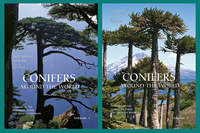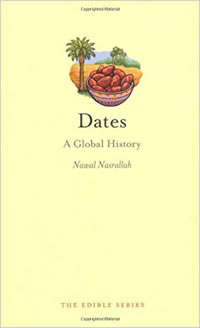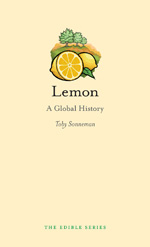
In “The Mushroom Hunters,” Seattle author Langdon Cook asks what professional foragers get for their efforts: “An itinerant life on the road, continually moving with the seasons? A low hourly wage and no chance for health insurance? A garden variety of potential wilderness pitfalls, including injury, exposure, even wild animals?”
The answer is: all of the above, but that doesn’t stop this from being a very big business. The collectors, those who buy from collectors, the distributors, and even the celebrity chefs who are at the top of this commercial food chain weave in and out of these pages much like in a high-energy, first-person novel. The settings, from the Yukon to California are evocative, too, but mostly somewhat vague–the secret locations of valuable hunting grounds are not to be shared.
This is Cook’s second book on foraging. The Miller Library also has “Fat of the Land” from 2009. In addition to mushrooms, this book highlights the collection practices for fiddlehead ferns, dandelions, huckleberries, and a selection of animals including clams, crabs, and various fish. Several recipes will set your mouth watering.
 Melany Vorass Herrera is an enthusiastic and experienced forager who lives in Seattle. In
Melany Vorass Herrera is an enthusiastic and experienced forager who lives in Seattle. In  Richard Bitner has written three books about conifers in the garden; I think the best is the most recent,
Richard Bitner has written three books about conifers in the garden; I think the best is the most recent, ![[Conifers of the World] cover](https://depts.washington.edu/hortlib/graphix/ConifersoftheWorld.jpg)
 It is a nice balance that a publication of equal stature to the RHS encyclopedia on cultivated conifers has been recently published on conifers in the wild.
It is a nice balance that a publication of equal stature to the RHS encyclopedia on cultivated conifers has been recently published on conifers in the wild.  One of my favorite books on fragrance is The Fragrant Path by Louise Beebe Wilder. Published in 1932, and re-issued in 1990 (the Miller Library has both editions), I don’t think there is a garden fragrance book today that’s any better.
One of my favorite books on fragrance is The Fragrant Path by Louise Beebe Wilder. Published in 1932, and re-issued in 1990 (the Miller Library has both editions), I don’t think there is a garden fragrance book today that’s any better.![[A Handbook of the World's Conifers] cover](https://depts.washington.edu/hortlib/graphix/HandbookWorldsConifers.jpg)
 Dates: A Global History is another title in the Edible series from Reaktion Books. An unusual aspect of the fruit (technically a berry) of the date palm tree is that it may be harvested at three different stages of ripeness–the ultrasweet dates one usually finds for sale in groceries are at the final stage, when they have sun-dried on the tree and the skin has begun to wrinkle and darken. Dates have been used as a food staple for centuries. Once called ‘bread of the desert’ and ‘cake for the poor,’ dates are still considered of vital importance in combating world hunger.
Dates: A Global History is another title in the Edible series from Reaktion Books. An unusual aspect of the fruit (technically a berry) of the date palm tree is that it may be harvested at three different stages of ripeness–the ultrasweet dates one usually finds for sale in groceries are at the final stage, when they have sun-dried on the tree and the skin has begun to wrinkle and darken. Dates have been used as a food staple for centuries. Once called ‘bread of the desert’ and ‘cake for the poor,’ dates are still considered of vital importance in combating world hunger. I’ve always wondered about the warty etrog (citron, or Citrus medica) used as part of the Jewish observance of Sukkot (etrog represents one of The Four Species mentioned in the Biblical description of this festival; the others are palm, myrtle, and willow): what purpose did the fruit serve beyond the ritual, and how was this odd-looking fruit related to lemon? The answers to these and many other citrus-related questions may be found in Toby Sonneman’s
I’ve always wondered about the warty etrog (citron, or Citrus medica) used as part of the Jewish observance of Sukkot (etrog represents one of The Four Species mentioned in the Biblical description of this festival; the others are palm, myrtle, and willow): what purpose did the fruit serve beyond the ritual, and how was this odd-looking fruit related to lemon? The answers to these and many other citrus-related questions may be found in Toby Sonneman’s  Part biography, part garden photo essay, and part ventriloquist’s act, Marta McDowell’s Beatrix Potter’s Gardening Life (Timber Press, 2013) provides a window into Potter’s world. If you have read her children’s books, you will have a lasting impression of the charming adventures of rabbits, hedgehogs, kittens, and ducks but you may not think of Beatrix Potter as a botanical illustrator. I was surprised to discover that the highly accomplished sketch of foxglove and periwinkle on page 27 was made when she was only ten. The best feature of this book is the gathering together of selected drawings and watercolors of plants, fungi, and landscapes. Potter’s natural history illustrations (particularly of mushrooms) are featured in Ambleside’s
Part biography, part garden photo essay, and part ventriloquist’s act, Marta McDowell’s Beatrix Potter’s Gardening Life (Timber Press, 2013) provides a window into Potter’s world. If you have read her children’s books, you will have a lasting impression of the charming adventures of rabbits, hedgehogs, kittens, and ducks but you may not think of Beatrix Potter as a botanical illustrator. I was surprised to discover that the highly accomplished sketch of foxglove and periwinkle on page 27 was made when she was only ten. The best feature of this book is the gathering together of selected drawings and watercolors of plants, fungi, and landscapes. Potter’s natural history illustrations (particularly of mushrooms) are featured in Ambleside’s